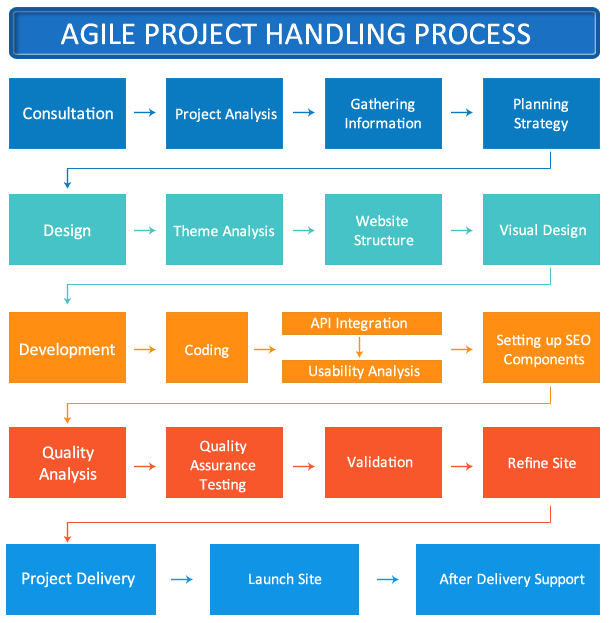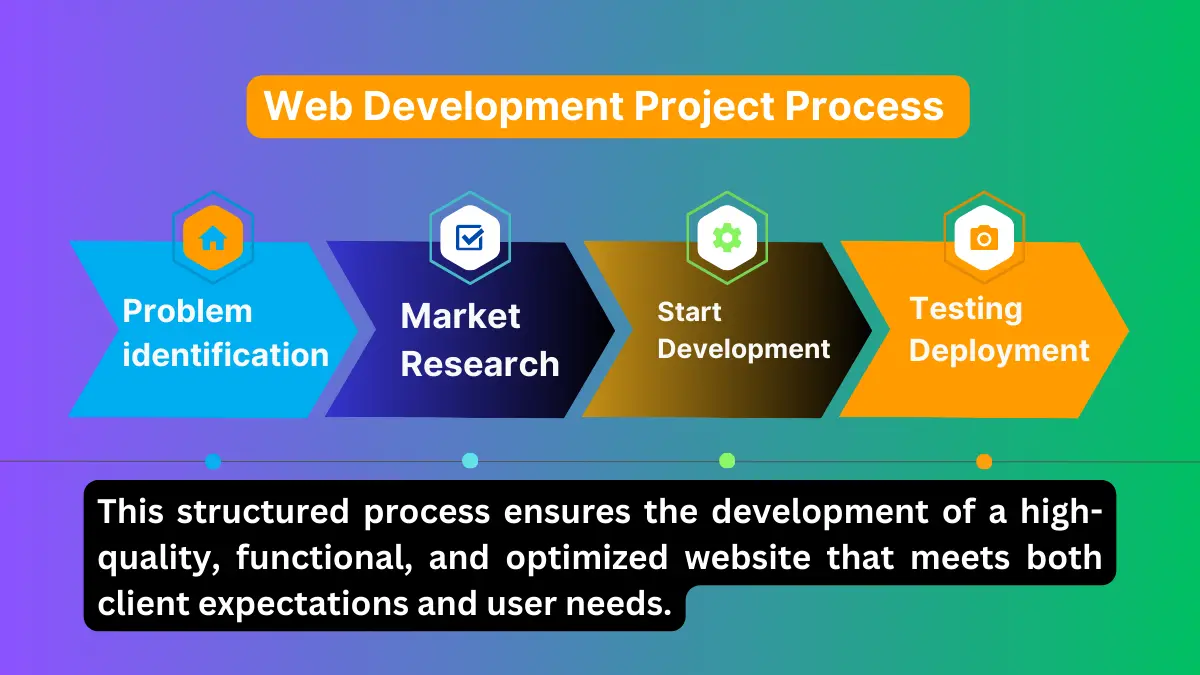Web Development Project Process
The web development project process involves several key stages to ensure the creation of a functional, visually appealing, and user-friendly website. It typically starts with planning and discovery, where goals, target audience, and technical requirements are outlined. Next is design and prototyping, where wireframes and mockups are created to visualize the layout and aesthetics. Once approved, the project moves to development, where the site is coded, integrating front-end and back-end functionality. After development, thorough testing and quality assurance is conducted to ensure performance, security, and responsiveness. Finally, the site is launched and maintained, with ongoing updates and optimizations as needed.

Step-by-Step Web Development Project Process
- Discovery & Planning
- Client Consultation: Begin with understanding the client’s needs, goals, target audience, and desired functionalities.
- Research & Analysis: Perform market research, competitor analysis, and user behavior studies to inform decisions.
- Project Scope & Timeline: Define the project’s scope, deliverables, and create a realistic timeline and budget.
- Wireframing & Prototyping
- Sitemap Creation: Develop a sitemap outlining the structure and navigation flow of the website.
- Wireframes: Create wireframes to visualize the layout, placement of content, and design hierarchy without focusing on aesthetics.
- Prototype Development: Design interactive prototypes to give a more tangible feel of the user experience (UX) before development.
- Design
- UI Design: Turn wireframes into fully designed website layouts, incorporating branding elements, colors, typography, and images.
- Responsive Design: Ensure designs are adaptable across devices (desktops, tablets, and mobiles) for a consistent user experience.
- Client Feedback & Revisions: Review the design with the client and refine based on their feedback.
- Development
- Front-End Development: Convert the design into code using technologies like HTML, CSS, and JavaScript, ensuring responsiveness and interactivity.
- Back-End Development: Build the server-side functionalities using programming languages and frameworks such as PHP, Python, or Node.js, connecting the front-end with databases and servers.
- Content Management System (CMS) Integration: If applicable, integrate with a CMS like WordPress, allowing the client to manage content easily.
- Content Creation & Integration
- Content Writing & Media: Develop and gather website content such as text, images, and videos.
- SEO Optimization: Optimize content with appropriate keywords, meta tags, and structure for better search engine ranking.
- Content Upload: Integrate all content into the website’s design and layout.
- Testing & Quality Assurance
- Browser & Device Testing: Test the website across multiple browsers and devices to ensure consistent functionality and design.
- Performance Testing: Analyze the website’s loading speed, responsiveness, and overall performance.
- Security Testing: Ensure the website is secure from vulnerabilities by implementing SSL, security plugins, and other measures.
- Bug Fixing: Identify and resolve any issues discovered during the testing phase.
- Launch
- Client Approval: After final testing, get approval from the client to proceed with the website launch.
- Deployment: Transfer the website from the development server to the live server.
- Final Check: Conduct a final review to ensure everything works as expected post-launch.
- Post-Launch Maintenance & Support
- Monitoring & Analytics: Set up analytics tools to track website performance and user behavior.
- Regular Updates: Update the website’s software, plugins, and security patches regularly.
- Ongoing Optimization: Continually optimize the site based on performance data and user feedback.
- Technical Support: Provide ongoing technical support to resolve any issues or make improvements.
This structured process ensures the development of a high-quality, functional, and optimized website that meets both client expectations and user needs.

